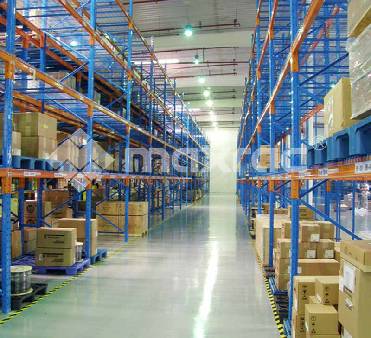Warehouse shelves include light and medium-sized butterfly-hole shelves, heavy-duty diamond-shaped holes, square shelves, stainless steel shelves, chrome-plated shelves, wire shelves, etc., made of cold-rolled steel. From the perspective of unit shelf load, they can be divided into light shelves and Medium Duty Shelves. And heavy shelves.
Standard racks are super large specifications that can be achieved by scientifically designing racks and racks while distributing weight for each layer of the warehouse. Standard Warehouse Racks are suitable for most buyers according to customers' order requirements. This is a warehouse prepared in advance. Its parameters are fixed and cannot be changed. Warehouse racks are designed to meet the needs of orderers for warehouse racks in a short time and do not require high racking requirements.
Warehouse racks are usually used to store light and small items that use their own gravity to move automatically. These items are usually cardboard boxes or entire goods stored in plastic crates. In the process of operation, the goods use their own gravity to realize the flow of goods, first in, first out, and the goods are transported by trolleys, which are convenient to enter and exit manually. In the process conversion process on both sides of the assembly line, in the picking operation of the distribution center, electronic tags can be used to realize the information management of the goods.

Warehouse Shelves
The main functions of warehouse shelves: Shelf Storage and storage, supply and demand adjustment, wholesale warehouse shelves, distribution and distribution processing. Provide information, adjust transportation capacity, and reduce material costs.
1.Storage and storage: It is the original basic function of storage. It mainly stores stored items to avoid loss and damage. Manage collective operations reasonably and effectively.
2. Adjust the deviation of supply and demand in the production and sales process due to various reasons. In this case, the buffering characteristics of the warehouse are needed to adjust the storage to function by changing the time characteristics of the ;object;.
3. Reduce logistics costs. Scientific and reasonable warehouse decision-making and warehouse management can effectively reduce overall warehouse costs and logistics costs. Different production types and sales models require different strategic planning and management models.
4. Distribution and distribution processing Modern warehouses have gradually evolved into a modern logistics distribution center integrating distribution processing and distribution.
5. Provide information warehouse provides information for all systems, warehouse shelves are an important indicator of modern warehouses.
6. Adjusting the transportation capacity The transportation capacity of various transportation vehicles is different, and the transportation cost and inventory cost are opposite. The faster the transportation, the higher the cost, the lower the transportation capacity, the higher the storage capacity, and the higher the storage cost.